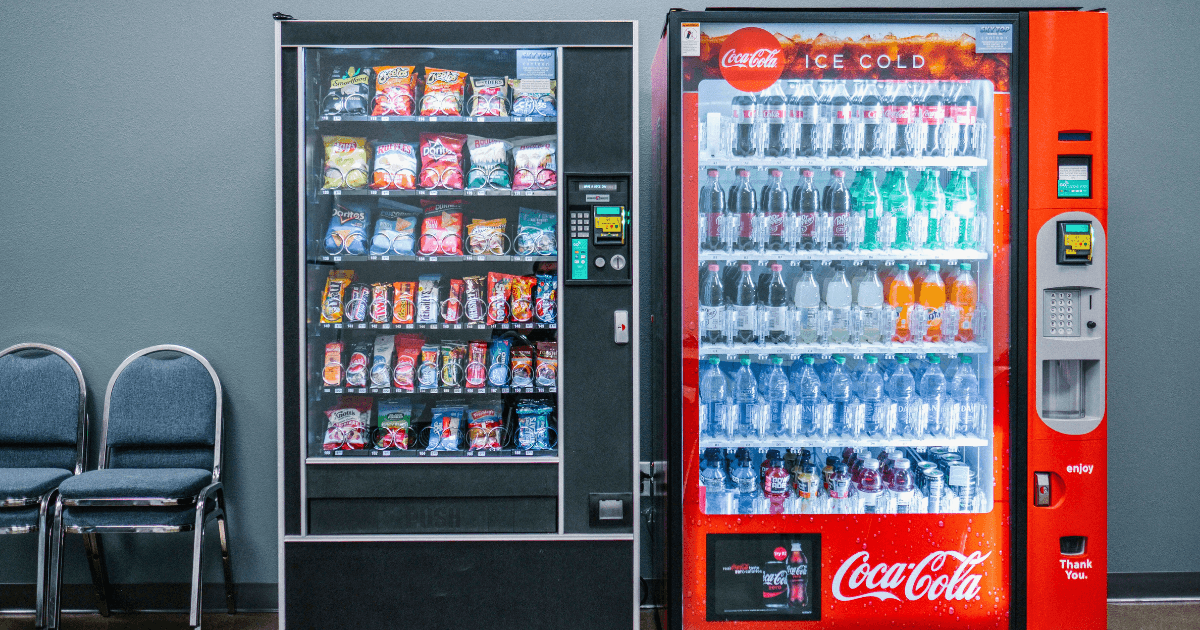Laundromat Investment Analysis: The Numbers Behind My Semi-Passive $4,000/Month Business

In the world of wealth-building, few investments combine the stability, cash flow potential, and semi-passive nature of a well-run laundromat. Eighteen months ago, I took the plunge and purchased a struggling laundromat in a densely populated neighborhood. Today, that same business generates $4,000 in monthly profit while requiring just 10-15 hours of my time per week.
This isn’t about luck or timing—it’s about understanding the numbers, implementing systems, and applying key psychological principles to business ownership. In this post, I’ll break down the exact financial metrics, operational strategies, and wealth-building lessons from my laundromat journey.
The Laundromat Opportunity in 2025
Before diving into my personal experience, let’s examine why laundromats remain compelling investments in 2025:
- The laundromat industry boasts a remarkable 94.8-95% success rate over five years
- The U.S. laundromat industry generates approximately $6.8 billion in annual revenue
- Profit margins typically range from 20-35%, with top performers achieving 50%
- The industry is experiencing a compound annual growth rate of 2.3%
- Approximately 90% of customers are repeat business
While not as glamorous as tech startups or as trendy as cryptocurrency, laundromats offer something more valuable: consistent cash flow with minimal time investment in an essential service industry that remains remarkably stable regardless of economic conditions.
My Laundromat Journey: From Purchase to Profit
The Initial Investment
My journey began with extensive research and a calculated investment:
Purchase Price: $210,000
- Existing laundromat business: $160,000
- Renovations and upgrades: $50,000
Funding Structure:
- Down payment (25%): $52,500
- SBA loan (75%): $157,500
- Loan terms: 10 years at 6.75% interest ($1,805 monthly payment)
While this may seem substantial, the business now generates approximately $48,000 in annual profit—providing a 22.9% cash-on-cash return on my initial investment.
The Location Analysis
The single most critical factor in laundromat success is location. I evaluated over 20 potential laundromats before purchasing, using a systematic scoring approach:
- Demographic analysis: High renter population (73% in my location’s 1-mile radius)
- Competition mapping: Nearest competitor was 1.2 miles away
- Foot traffic patterns: Located between a grocery store and apartment complexes
- Parking availability: 12 dedicated spaces
- Visibility and accessibility: Corner location with street frontage
The laundromat I purchased scored 8.5/10 on my evaluation matrix but was underperforming due to poor management, outdated equipment, and limited operating hours—creating the perfect turnaround opportunity.
The Financial Reality: Breaking Down the Numbers
Let’s examine the actual financial performance of my laundromat:
Monthly Revenue: $12,000
- Washer revenue: $7,200
- Dryer revenue: $3,600
- Additional services (wash-and-fold, vending): $1,200
Monthly Expenses: $8,000
- Loan payment: $1,805
- Rent: $2,400
- Utilities: $2,200 (water: $1,000, electricity: $800, gas: $400)
- Insurance: $250
- Maintenance/repairs: $500
- Supplies: $200
- Part-time attendant (20 hrs/week): $645
Monthly Profit: $4,000
- Profit margin: 33.3%
- Annual profit: $48,000
- Cash-on-cash return: 22.9% ($48,000 ÷ $210,000)
The Turnaround Strategy: Key Improvements
When I purchased the laundromat, it was generating just $8,500 in monthly revenue with a profit of $1,800. Here’s how I transformed the business:
- Equipment upgrades: Replaced 8 outdated washers with energy-efficient models
- Payment system modernization: Installed card readers alongside coin operation (increased revenue by 22%)
- Extended hours: Converted to 24/7 operation with security cameras
- Added services: Introduced wash-and-fold service with 48-hour turnaround
- Pricing optimization: Implemented tiered pricing based on machine size and time of day
- Marketing initiatives: Local apartment complex partnerships and Google Business optimization
The most significant impact came from the payment system modernization. By allowing customers to pay with credit cards, mobile payments, and loyalty cards, average transaction value increased by 17% and customer retention improved dramatically.
The Operational System: Creating Semi-Passive Income
To make this a true wealth-building asset rather than another job, I’ve implemented systematic processes:
- Remote monitoring: Security cameras and laundry management software allow me to check operations from anywhere
- Part-time attendant: A reliable attendant handles 20 hours per week of on-site management
- Maintenance schedule: Preventative maintenance every 90 days reduces emergency repairs
- Vendor relationships: Established service agreements with local technicians for priority response
- Financial automation: Automated bookkeeping and reporting systems track performance metrics
My personal time commitment averages 10-15 hours weekly, primarily focused on:
- Weekly site inspection and quality control (3-4 hours)
- Financial review and planning (2-3 hours)
- Marketing and business development (3-4 hours)
- Occasional maintenance supervision (2-4 hours)
The key psychological principle here is creating systems that remove you from day-to-day operations—the business should generate income whether you’re physically present or not.
Five Critical Lessons From My Laundromat Investment
1. The Numbers Never Lie
Before purchasing, I created a detailed financial model with conservative assumptions. When the seller claimed $10,000 monthly revenue, I verified through utility bills and machine cycle counts, revealing the actual figure was closer to $8,500. This due diligence prevented overpaying and set realistic expectations.
Implementation strategy: Create a comprehensive financial model with three scenarios (conservative, moderate, aggressive) and verify all seller claims with objective data.
2. Location Quality Trumps Equipment Age
I chose a laundromat with older equipment in an excellent location over a newer facility in a mediocre area. Equipment can be upgraded, but location is permanent. This decision proved crucial to my success.
Implementation strategy: Develop a weighted scoring system for location factors (demographics, competition, visibility) and prioritize them over cosmetic or equipment considerations.
3. Modernization Drives Profitability
Investing $50,000 in renovations and upgrades increased revenue by 41% within six months. Modern payment systems, energy-efficient machines, and improved aesthetics dramatically enhanced customer experience and operational efficiency.
Implementation strategy: Focus initial capital expenditures on improvements with measurable ROI: payment systems, energy efficiency, and customer experience enhancements.
4. Additional Services Create Exponential Value
Adding wash-and-fold service required minimal investment ($2,000 for folding tables, supplies, and training) but now generates $1,000 monthly in high-margin revenue. This service attracts a different customer segment willing to pay premium prices.
Implementation strategy: Identify complementary services that leverage existing assets and infrastructure with minimal additional cost.
5. Systems Enable Scalability
Documenting processes, training staff, and implementing technology allows me to operate the business semi-passively. These systems have positioned me to acquire a second location without doubling my time commitment.
Implementation strategy: Create detailed operations manuals, leverage technology for remote management, and build redundancy into all critical processes.
The Psychological Framework for Laundromat Success
Beyond the mechanical aspects of the business, specific psychological principles have proven crucial to my success:
1. The Compound Effect
Small, consistent improvements compound dramatically over time. Increasing average revenue per customer by just 50 cents per visit added $1,200 monthly to the bottom line.
2. Delayed Gratification
The laundromat business rewards patience. My first three months generated minimal profit as I invested in improvements, but this foundation created sustainable long-term returns.
3. The Pareto Principle (80/20 Rule)
I discovered that 20% of my machines generate 60% of my revenue. Identifying these high-performers and optimizing their placement transformed my profitability.
4. Loss Aversion Mindset
Humans are more motivated to avoid losses than acquire gains. I leverage this by focusing on minimizing downtime, preventing theft, and eliminating waste.
5. Abundance Mentality
Rather than viewing competitors as threats, I’ve built relationships with other laundromat owners, leading to equipment purchasing opportunities and shared knowledge.
Common Pitfalls to Avoid
My journey included several costly mistakes you can avoid:
- Underestimating utility costs: My initial projections missed the impact of water rate increases
- Neglecting security measures: Early theft issues were resolved with visible cameras and improved lighting
- Ignoring customer experience: Small investments in seating, Wi-Fi, and cleanliness dramatically improved customer retention
- Deferring maintenance: Preventative maintenance is always cheaper than emergency repairs
- Failing to leverage technology: Modern payment and management systems are essential, not optional
Is a Laundromat Right for Your Investment Portfolio?
This business model isn’t suitable for everyone. Consider these factors before diving in:
Ideal for you if:
- You have $50,000+ in capital for a down payment
- You can dedicate 10-20 hours weekly to operations (initially)
- You enjoy systems optimization and process improvement
- You’re seeking stable cash flow rather than rapid appreciation
- You have basic mechanical aptitude or willingness to learn
Not recommended if:
- You need immediate passive income (expect 6-12 months to optimize)
- You lack the ability to handle occasional maintenance emergencies
- You’re unwilling to deal with customer service issues
- You don’t have the capital for necessary improvements
The Future of My Laundromat Investment
Looking ahead, my strategy includes:
- Acquiring a second location within 12 months
- Expanding wash-and-fold service with pickup/delivery options
- Implementing a subscription model for regular customers
- Further automating operations through technology
- Potentially partnering with apartment complexes for on-site services
My goal isn’t merely more locations—it’s more profit per location through optimization and specialization.
How to Evaluate Your Own Laundromat Investment
If you’re intrigued by the potential of laundromats as a wealth-building vehicle, here’s a simplified framework to evaluate opportunities:
1. Financial Analysis
Calculate these key metrics for any potential purchase:
- Cash-on-cash return: Annual profit ÷ Total investment (target: 20%+)
- Capitalization rate: Annual net operating income ÷ Purchase price (target: 8-12%)
- Price-to-earnings ratio: Purchase price ÷ Annual profit (target: 3-5x)
- Breakeven analysis: Fixed costs ÷ Contribution margin per customer
2. Location Assessment
Evaluate these critical location factors:
- Demographics: Renter percentage, population density, income levels
- Competition: Number and quality of competitors within 1-2 miles
- Visibility and accessibility: Storefront exposure, parking, public transportation
- Security: Area crime statistics, lighting, neighboring businesses
- Growth potential: Area development plans, population trends
3. Operational Evaluation
Assess these operational elements:
- Equipment condition: Age, maintenance history, efficiency
- Utility costs: Water, electricity, gas usage and rates
- Lease terms: Duration, renewal options, rent increases
- Staffing requirements: Attended vs. unattended, security needs
- Improvement potential: Obvious upgrades that could increase revenue
4. Due Diligence Checklist
Verify these critical items before purchasing:
- Financial statements: Minimum 2 years of profit and loss statements
- Utility bills: 12 months of water, electric, and gas bills
- Equipment documentation: Age, warranties, service records
- Lease agreement: Terms, restrictions, renewal options
- Permits and licenses: Business license, water usage permits, etc.
The 80/20 Summary: Key Takeaways
If you’re considering a laundromat investment, focus on these critical success factors:
- Location is everything: Prioritize demographic fit and limited competition
- Verify the numbers: Trust but verify all seller claims with objective data
- Modernize operations: Payment systems and energy efficiency drive profitability
- Build systems: Create processes that minimize your time investment
- Add complementary services: Wash-and-fold and vending increase revenue per square foot
The laundromat business may not be glamorous, but it offers something invaluable: a predictable path to building wealth through cash flow and equity with minimal time investment.







